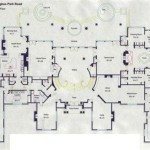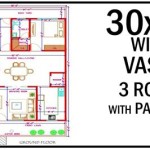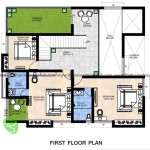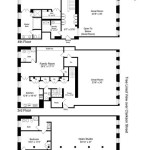Floor Plans With His and Hers Master Bathrooms: A Design for Shared Luxury and Personal Space
The concept of "his and hers" master bathrooms represents a significant evolution in residential design, reflecting a growing desire for personalized spaces within the shared environment of a master suite. This design trend moves beyond a simple larger bathroom to offer distinct areas tailored to the specific needs and preferences of each partner, creating a harmonious balance between togetherness and individual comfort. Floor plans incorporating this feature are becoming increasingly popular in luxury homes, custom builds, and even renovations aimed at enhancing the functionality and appeal of existing properties.
A master bathroom designed with separate "his and hers" areas is more than just an aesthetic choice; it addresses practical considerations related to morning routines, storage demands, and overall bathroom usage. By providing dedicated spaces for each individual, these floor plans minimize congestion, reduce conflicts, and promote a more relaxed and private bathroom experience. This article will delve into the various aspects of designing floor plans with his and hers master bathrooms, highlighting key considerations, design principles, and examples of successful implementations.
Key Point 1: Defining the "His and Hers" Zones
The cornerstone of any successful "his and hers" master bathroom floor plan is the clear and thoughtful delineation of individual zones. This requires a careful assessment of each partner's specific needs and preferences. Does one partner require a larger vanity area for makeup application and hairstyling? Does the other prefer a spacious walk-in shower with multiple showerheads? Understanding these individual requirements is crucial for determining the size and layout of each zone.
Several approaches can be used to define the "his and hers" zones. A common method is to create mirrored layouts, where each partner has a vanity, sink, and storage area on opposite sides of the room. This symmetrical design promotes visual balance and simplifies the overall floor plan. However, a mirrored layout is not always the most practical solution, especially if one partner requires more space or has specific accessibility needs.
Another approach is to create asymmetrical zones that cater to different needs. For example, one zone might feature a large soaking tub with a separate shower, while the other zone focuses on a spacious vanity area with ample storage. This approach allows for greater flexibility in accommodating individual preferences and can lead to a more customized and functional bathroom design.
The physical separation between the zones is equally important. Partial walls, strategically placed cabinetry, or even changes in flooring material can be used to visually and physically define the individual spaces. These dividers don't necessarily need to completely separate the zones; in fact, maintaining some degree of openness can help to preserve a sense of spaciousness and connection within the bathroom.
Consideration should also be given to the placement of shared elements within the bathroom. The toilet, for example, can be placed in a separate water closet accessible from both zones. Alternatively, two separate toilets can be incorporated into the design, offering even greater privacy and convenience. The placement of the shower is another key consideration. A single large shower with multiple showerheads can be shared by both partners, or separate showers can be included in each zone, depending on individual preferences.
Key Point 2: Optimizing Storage Solutions
One of the primary motivations for creating "his and hers" master bathrooms is to address the issue of storage. In a shared bathroom, storage space is often a source of contention, with limited room for toiletries, personal care items, and other essentials. By providing dedicated storage areas for each partner, these floor plans help to minimize clutter and promote a more organized and efficient bathroom environment.
The design of the storage solutions should be tailored to the specific needs of each partner. For example, one partner might require a medicine cabinet with adjustable shelves to accommodate a variety of medications and personal care products. The other might prefer deep drawers for storing larger items such as hair styling tools and bulky toiletries.
Vanity cabinets are a crucial component of any "his and hers" storage plan. Consider incorporating a combination of drawers, shelves, and cabinets to maximize storage capacity and provide flexibility for organizing different types of items. Pull-out shelves and drawer organizers can be used to further enhance the functionality of the vanity cabinets.
In addition to vanity cabinets, linen closets and shelving units can be incorporated into the design to provide additional storage space for towels, linens, and other bathroom essentials. Consider installing a built-in linen closet near the shower or tub for easy access to towels. Open shelving units can be used to display decorative items and add visual interest to the bathroom.
The placement of storage solutions is also important. Consider the flow of traffic within the bathroom and ensure that storage areas are easily accessible from all areas. For example, a towel rack should be located within easy reach of the shower, and vanity cabinets should be positioned near the sink for convenient access to toiletries.
Beyond traditional cabinetry, consider incorporating creative storage solutions to maximize space and enhance the aesthetics of the bathroom. Built-in niches in the shower or tub area can provide convenient storage for shampoo, conditioner, and other bathing essentials. Floating shelves can be used to display decorative items and add visual interest to the walls. Even the space under the sink can be utilized for storage with the addition of a stylish and functional cabinet.
Key Point 3: Style, Materials, and Aesthetics
While functionality and storage are key considerations in designing "his and hers" master bathrooms, the overall style, materials, and aesthetics are equally important. The bathroom should be a reflection of the homeowners' personal tastes and should complement the overall design of the home. The design should also consider the long-term durability and maintenance of the materials selected.
The choice of materials can significantly impact the look and feel of the bathroom. Natural stone, such as marble or granite, can add a touch of luxury and elegance. Ceramic tile offers a wide range of colors, patterns, and textures, making it a versatile choice for both floors and walls. Wood accents can add warmth and character to the space.
Consider using different materials or finishes to define the "his and hers" zones. For example, one zone might feature a darker color palette and more masculine materials, such as dark wood and brushed metal, while the other zone might feature a lighter color palette and more feminine materials, such as light-colored tile and polished chrome. This approach can help to create distinct and personalized spaces within the bathroom.
The lighting design is another crucial element of the overall aesthetic. Combine natural light with artificial light to create a well-lit and inviting space. Consider incorporating task lighting for activities such as shaving and applying makeup, as well as ambient lighting to create a relaxing and spa-like atmosphere. Dimmable lights can be used to adjust the lighting levels to suit different moods and activities.
The fixtures and hardware selected should complement the overall style of the bathroom. Choose faucets, showerheads, and other fixtures that are both functional and aesthetically pleasing. Consider using different finishes or styles to differentiate the "his and hers" zones. For example, one zone might feature modern, minimalist fixtures, while the other zone might feature more traditional, ornate fixtures.
Finally, don't forget the decorative elements. Add personal touches such as artwork, plants, and decorative accessories to personalize the space and make it feel like home. Consider incorporating aromatherapy diffusers or scented candles to create a relaxing and inviting atmosphere.
In conclusion, designing floor plans with his and hers master bathrooms requires a careful consideration of individual needs, storage requirements, and aesthetic preferences. By creating distinct and personalized zones, optimizing storage solutions, and selecting appropriate materials and finishes, it is possible to create a bathroom that is both functional and beautiful, a true sanctuary for relaxation and rejuvenation.

His And Her Bathrooms 55137br Architectural Designs House Plans

Pin Page

His And Her Bathrooms 55137br Architectural Designs House Plans

Pin Page

Luxurious Master Bathroom Ideas Dfd House Plans Blog

House Design With A Bath For Both Of You 4740

25 Best His And Hers Bathroom Ideas House Floor Plans

Amazing Master Bathroom Ideas The House Designers

His Her Ensuite Layout Advice

25 Best His And Hers Bathroom Ideas House Floor Plans
Related Posts








